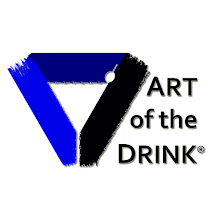July 16, 2006
Interesting discussion from one of the Podcast Pickle forums; thought I'd add it to my blog for those interested in martinis:
Q: I was surprised you put The Godfather in the Martini category. It doesn't have any martini ingredients, and is most often served on the rocks, not in a martini glass. Admittedly, my knowledge of the bartending art is limited to recently attending a bartending school, and I'm guessing you bartend for a living, so smartenize me as to why that's considered to be in the martini class.
A: You're right in that a Godfather isn't made from the traditional, classic martini ingredients...but then neither are most traditional, classic martinis. (Up or on the rocks isn't a factor -- any traditional martini can be served either way, and frequently are.) The original martini is actually a vermouth-based (herbed wine) drink that had the sweetness cut -- or was "dried out" -- by adding some gin, usually 3 parts vermouth to 1 part gin. The idea was that the slightly nutty flavor of the vermouth and the juniper flavor in the gin would work well together and make a pleasing drink (which it did). Over the years, it became more and more vogue to use less vermouth and more gin, probably because it sounds cooler to order a "dry martini" (less vermouth) than just a "martini" until the standard recipe became 3 or even 4 parts gin to 1 part dry vermouth. That's pretty much as close to a "classic" martini as you can get, and here's where it gets confusing.
Enter vodka. Never meant to be in a martini, since it's basically just straight ethanol and as such only serves to increase the alcohol content of the vermouth with no flavor contribution (see nutty/juniper discussion above). But it looks like gin, and most people don't know what the difference is between the two, plus it's the most popular spirit in the US. So naturally it got mixed into martinis. As the vodka revolution gained traction, the vodka martini quickly outstripped the original gin martini in popularity until today when most people order an uncalled (no instructions like"dry" or "gin") martini they're looking for a vodka martini.
Oh yeah, and the dry thing kept moving as well, so that now a standard, uncalled martini in most higher-volume, lower-end bars is a big shot of chilled vodka with a dash of dry vermouth and an olive thrown in. No relation at all to the original drink.
So, what does all this have to do with the Godfather? Well, vodka wasn't the only evolution of the martini recipe. Keeping the gin and subbing out the vermouth with sweetened lime juice gave us the gimlet (which also can be made with vodka). Switching the olives with cocktail onions makes a Gibson (more history there, but too long for this already over-long thread). Whisky and sweet vermouth in the classic martini proportions (3:1) make a Manhattan, while using Scotch produces a Rob Roy (a dash of bitters can also be added, and the olives are replaced with cherries in deference to the sweetness of the drink). Finally, using amaretto instead of sweet vermouth in a Manhattan gives us a Godfather, and there we are.
All of the above (and several others) are considered to be "classic" martinis, the definition of which I teach as being roughly three parts base liquor (80-ish proof) mixed with one part sweetening liqueur (or wine or syrup or similar, 40-ish proof or less), chilled and served up or on the rocks.
Almost done here, but I have to mention "modern" martinis (cosmopolitans, lemon drops, chocolate martinis, etc.) quickly just to round things out. From a recipe and drink development standpoint, they have no relation to classic martinis at all, but they outsell them like crazy and are blurring the martini definition beyond recognition. The cosmo is probably the one that started it all -- it's basically just a Cape Cod (vodka, cranberry juice, lime) made stronger (less cranberry) and served up. From there bartenders (and restaurants) realized you could take any drink, cut the mixer(s), serve it in a martini glass, and charge quite a bit more for it. And the martini bar was born.
Modern martinis, then, have become any fairly strong mixed drink (usually made with no more mixer than liquor), chilled and served up in a martini glass (never on the rocks, or it reverts right back to a standard mixed drink). So we've gone from defining a martini by it's ingredients to defining it by its glassware. To keep the history straight (and also because it's important when developing new recipes) I always make a distinction between classic and modern martinis, and teach the definitions as I've presented them above.
Monday, July 17, 2006
Subscribe to:
Posts (Atom)
